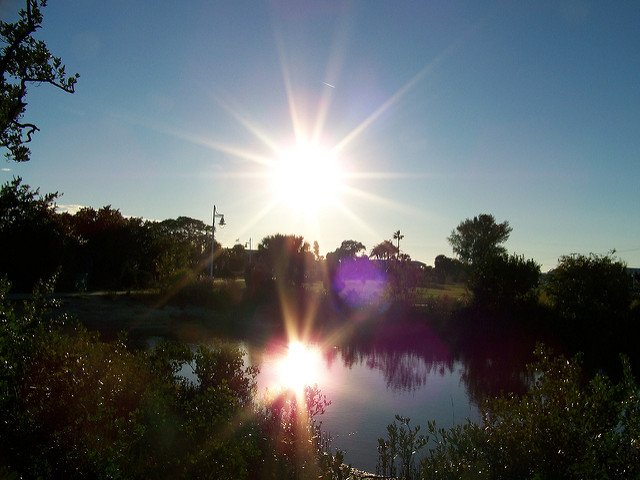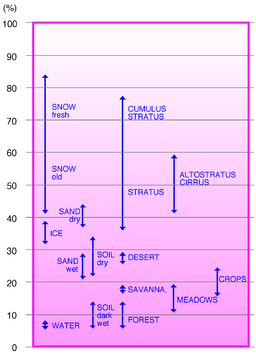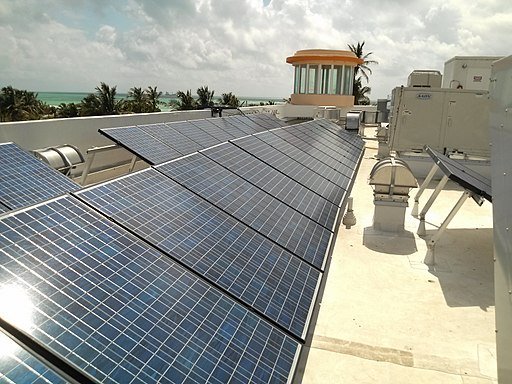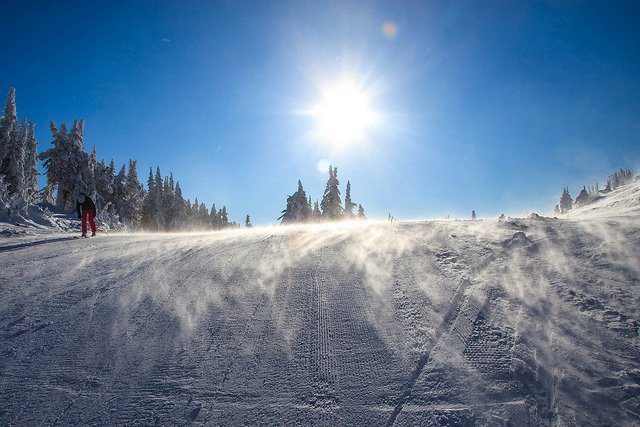Hey!
Introduction... I wouldn’t know why the words Hey and Introduction switched places in my head as at the time of writing this but that shouldn’t be the problem here. The problem here is that I have a problem with the Sun. Yeah I know he’s a good guy; aiding in important stuff like drying our wet clothes, providing food for plants (which in turn provide food for us), light for us to see, now serves as an energy source for electricity production (which is actually really cool), and many other important stuff like that. However, why do we have to agree with him that he’s the most important guy in the solar system??? I mean, that dude has been literally trying to roast us since as far back as life began on earth! But that’s a story for another day.
My problem for today is this – I really hate the fact that the sun has to dictate to me about the colour of clothes I can wear out on certain days. I am a lover of the colour black but the fact that I just have to avoid wearing my favourite black shirts on very sunny days for fear of getting all hot, sweaty and feeling irritated is always annoying.
During my quest to find out why the sun hates me so much, I came across this other dude who calls himself Albedo. He says he is not in good terms with the colour black and that is why he allows the sun to punish me on some of the days that I decide to associate myself with that colour; the days when the sun deems it fit and I deem myself stubborn. I wore on my face a puzzled expression. I was just starring awkwardly at this weird-looking fellow that had on a reflective jacket on top of a cool Nike T-shirt as he sought to give me an explanation about himself, which I am also going to share with you before I strangle him since I can’t get close to the sun to get my revenge, cos I’m yet to get my space license_ or better still, for fear of getting roasted.
Let’s meet Albedo!
 Sunlight reflection on open water surface
(Image Source]: Flickr
Sunlight reflection on open water surface
(Image Source]: Flickr Albedo is a Latin word meaning “whiteness”. That kinds of make sense to me cos the fellow I encountered could easily pass as a descendant of Snow White. Well, that’s none of my business. I just cared to know why I always had to suffer for putting on my favourite shirt colour on very sunny days.
Albedo is a measure of the amount of incoming solar radiation that a body is able to reflect. The phenomenon is fundamnetally of two types; the Bond Albedo and the Normal Albedo.
The Bond Albedo represents the ability of planetary bodies to reflect solar radiation back to space. The value of this type of albedo is defined over the entire range of the electromagnetic spectrum. This is in contrast to the Normal Albedo whose values are considered for the visible and near-infrared portions of the spectrum. This is because Normal albedo describes the reflectivity of sun radiation within the surface of the earth; and as we know (some of us I guess), the ozone layer, clouds and other elements within the earth’s atmosphere prevents higher level energy waves of the sun’s radiation from getting to the earth’s surface. So basically, the Normal Albedo is what affects you, me, and every other object on the earth’s surface, and that is what we are going to discuss here.
On the earth surface, the major factors that influence albedo include; the colour of the surface, the moisture content of the surface, and the texture of the surface.
As earlier mentioned, the portion of the electromagnetic spectrum that reaches the earth’s surface from the sun is mostly the visible light portion (0.39–0.7 μm). This is why albedo of surfaces is usually estimated based on colour, with black colour surfaces representing low albedo and pure white surfaces representing high albedo on a range of zero to one (0-1) albedo. This explains why I am not allowed to put on black clothes during peak summer days because the colour absorbs most of the sun's energy that falls on it.
The amount of moisture that a substance can boast of is also a very strong indicator of its albedo. Water is a poor conductor of heat. Sea water has a very low albedo because of its ability to absorb solar radiation. In the same wise, wet soils have much lower albedo than dry soils.
Surface texture is another big determining factor when measuring albedo of body surfaces. Rough surfaces tend to absorb more solar radiation than their smooth counterpart, thereby making the former to have a higher albedo than the latter. This is also affected by the influence of wind speed over roughness of surfaces.
Measuring Albedo
 Albedo of different surfaces (%)
(License: CC BY-SA 2.5, Author: Hannes Grobe]: Wikicommons
Albedo of different surfaces (%)
(License: CC BY-SA 2.5, Author: Hannes Grobe]: Wikicommons Albedo is measured as a fraction of the sun’s radiation that can be reflected by a surface. It is the ratio of reflected sun radiation to incoming solar radiation and as such, it can either be expressed as a percentage or (more commonly) a decimal. It can be measured with the use of a pigmentometer.
There are many satellites (such as the Envisat and Spot-Vegetation) set up to monitor the planet's albedo by use of sensors which measure the light from the Earth that reflects on the surface of the moon. The average albedo of the Earth has been measured to be between 0.30 and 0.36.
It is pertinent to indicate that most surfaces practically do not have a single albedo, but a variety of albedos that are brought together to have a single value that represents the albedo of that surface. Here are the albedo range of values of various surfaces on the earth in ascending order from the substance that least reflects solar radiation (ocean) to that which most reflects solar radiation (fresh snow).
| Surface | Range of Albedo |
|---|---|
| Ocean | 0.07 - 0.10 |
| Coniferous Forest | 0.08 - 0.15 |
| forest | 0.10 - 0.20 |
| Soil | 0.10 - 0.25 |
| Deciduous Trees | 0.15 - 0.18 |
| grass | 0.15 - 0.25 |
| Tundra | 0.20 |
| Grassland | 0.25 |
| desert | 0.25 - 0.40 |
| Sand | 0.35 |
| Desert Sand | 0.40 |
| Old/Melting Snow | 0.40 - 0.80 |
| concrete | 0.55 |
| dry snow | 0.75 - 0.95 |
| Fresh Snow | 0.80 - 0.90 |
Albedo of the human skin can also be measured and the table below shows albedo values for different races, with Africans typically having the lowest albedo and Europeans having the highest skin reflectance values.
| Race | Skin reflectance (Albedo) |
|---|---|
| African (Black) | 0.05 - 0.10 |
| African (Pigmy) | 0.10 - 0.15 |
| Indian | 0.15 - 0.30 |
| Iranian | 0.20 - 0.40 |
| European | 0.35 - 0.60 |
Albedo in Solar-power technology and energy buildings
 Sun's reflection on rooftop solar panels
(License: CC BY-SA 4.0, Author: B137]: Wikicommons
Sun's reflection on rooftop solar panels
(License: CC BY-SA 4.0, Author: B137]: Wikicommons Existing photovoltaic solar panels have been known to have energy efficiency values – the fraction of solar radiation that is converted to electrical energy – that are relatively low (around 11 – 20%). We know that one of the contributing factors to this phenomenon is that a certain amount of this incoming solar radiation, upon getting to the solar panel surfaces, is reflected back to the atmosphere. This is a function of the impurity of the materials that are used in manufacturing the photovoltaic cells. About Seventy-percent (70%) of sunlight is reflected by untreated solar panels while treated solar panels reflects about only seven-percent (7%).
I am of the opinion that colour mixing of these materials to darken the colour (to reduce reflectance) and probably roughen slightly, the surface of the panels, might bring about some improvement in efficiency due to a reduction in albedo. Though, a downside to this might be that of aesthetics as it may not seem appealing to most human eyes (mine included). There are even some sections of society that are not exactly comfortable with the aesthetic contribution that current solar panels give to their residential areas. So may suffice the cliché that says;
No need to rock the apple cart
Notwithstanding, the new tesla solar roofs can serve as a good platform for this idea to be implemented, since roofs can easily come in any colour and they don’t have generally flat surfaces. You can learn more about these tesla roofs here
In the design of energy efficient buildings, part of the consideration taken is whether a wall or ceiling warms the building or keeps it cool, based on the geographical location of the building. Light or white surface coatings of buildings helps to keep buildings cool because they reflect the sun’s radiation while dark or black surface coatings absorb much of the sun’s energy and therefore helps to keep buildings warm.
Albedo affects global warming, and vice versa
 Sun shining over a snow-covered land
(Image source]: Flickr
Sun shining over a snow-covered land
(Image source]: FlickrBy exposing the ocean surface to sunlight, the water warms up. This melts the ice from underneath, more ice therefore melts, which exposes more water, which melts more ice from underneath… Source
The concept of albedo is an important factor to consider in the investigation of climate change. Albedo affects the earth’s global warming and vice versa. Increased temperatures from global warming is melting more ice from around the world. The result of this on albedo is a decrease in the available white surface areas to reflect energy, and more presence of water in those areas to absorb the sun’s energy and melt more ice.
The greenhouse effect can also lower the Earth’s albedo as an increased number of greenhouse gases in the atmosphere can trap more infrared radiation, thus allowing more energy to get to the earth’s surface through the atmosphere. This greenhouse effect can therefore lower the albedo of the Earth and a lowered albedo will in turn result in increasing earth temperatures around the globe.
Trees preservation and reforestation should be encouraged in different parts of the world as trees reduce radioactive effects of solar reflection. Wetlands and fractions of snow cover should also be protected. The loss of the Arctic to recent climate change happenings is of great concern to the earth’s sustainability.
Conclusion
In fact, it is a good example of the ‘unsettled’ nature of climate change science. Source
REFERENCES
Albedo. Retrieved 15th June, 2018
Albedo. Retrieved 15th June, 2018
What is Albedo? Retrieved 15th June, 2018
Albedo. Retrieved 15th June, 2018
Albedo. Retrieved 15th June, 2018
The Albedo effect and global warming. Retrieved 15th June, 2018
Korol B, Bergfeld GR, Goldman H, McLaughlin J. (1977). Use of the pigmentometer, a new device for measuring skin albedo: relating skin color with a series of physiological measures. Pavlov J Biol Sci. 12(1):19-31
Jablonski, N.G.,Chaplin, G. (2005). The evolution of human skin coloration. J Hum Evol 2000; 39: 57-106
Can you please add the source of your quoted article?
For instance,
Oh okay... I'll do so right away. Thank you.
You are welcome
Hi @writeit!
Your post was upvoted by utopian.io in cooperation with steemstem - supporting knowledge, innovation and technological advancement on the Steem Blockchain.
Contribute to Open Source with utopian.io
Learn how to contribute on our website and join the new open source economy.
Want to chat? Join the Utopian Community on Discord https://discord.gg/h52nFrV
Albedo:reflectivity of light. I use to wonder how some people feel when they wear a thick black material or use same to cover all their body when it is sunny. Black materials are black body with ability to retain a lot of heat.
I really don't know why you hated the sun that much.. Haha.
Do you realize we owe our existence to that dude? When he is no more, that might mark the death of our planet.
Well it's not suppose to get this hot on the Earth's surface, but man has brought the heat upon himself.
Nicely written, I particularly love your narrative.
Haha the sun is a good guy... but I don't think he likes us that much. And yes, we are beginning to help him achieve his aim of trying to roast us all.
Thanks for stopping by, I appreciate.
Congratulations @writeit! You have completed some achievement on Steemit and have been rewarded with new badge(s) :
Click on the badge to view your Board of Honor.
If you no longer want to receive notifications, reply to this comment with the word
STOPDo not miss the last post from @steemitboard!
Participate in the SteemitBoard World Cup Contest!
Collect World Cup badges and win free SBD
Support the Gold Sponsors of the contest: @good-karma and @lukestokes